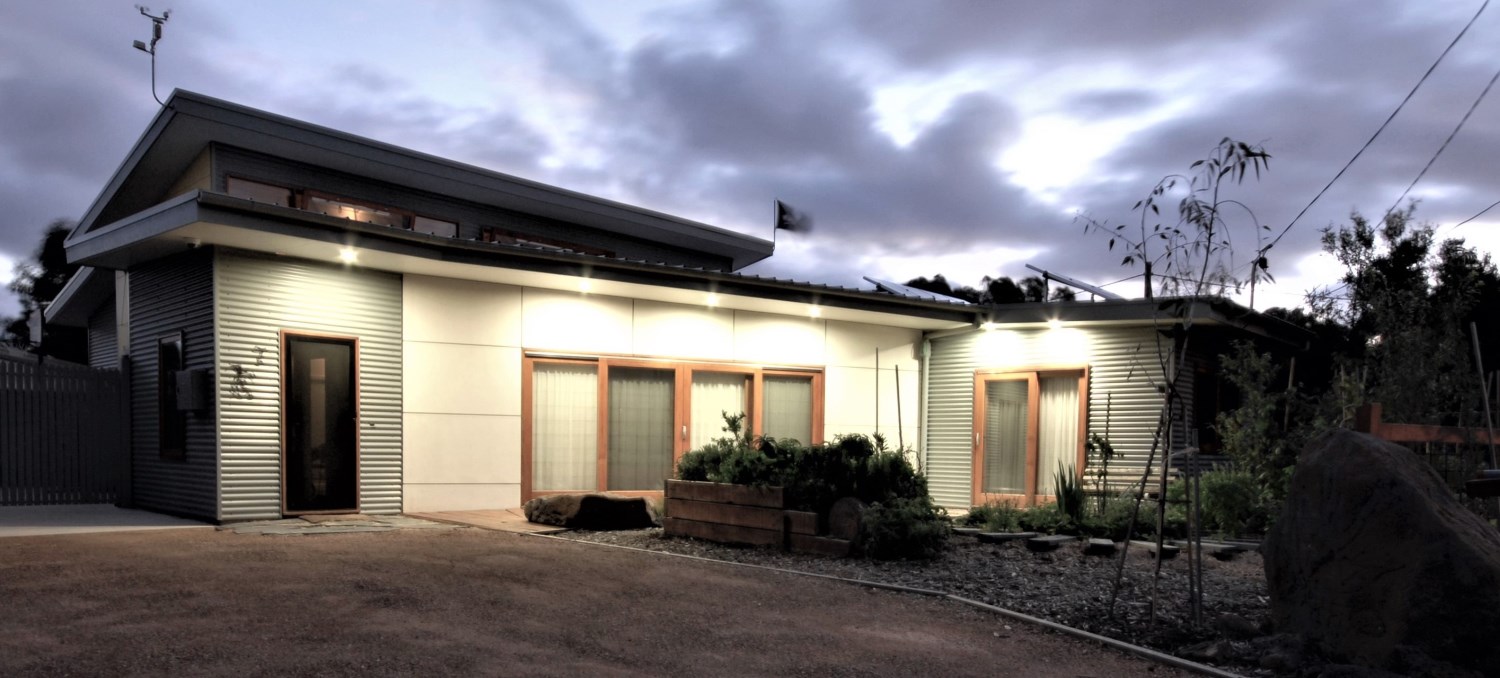Marion House
 The most challenging orientation for solar access is to have north to the street, as ideally you want large open windows in this direction, but that can have privacy issues from passing pedestrians.
The most challenging orientation for solar access is to have north to the street, as ideally you want large open windows in this direction, but that can have privacy issues from passing pedestrians.
This problem was solved at the Marion house by having one room at the required set-back line, and then kicking the living space further back into the property to create a suntrap, and allow for a substantial garden to act as a visual buffer.
To their credit the owners have used this space to create a beautiful permaculture herb and vegetable gardens, which can be accessed easily from the living room and kitchen.
The northern sunlight reaches deeply into the house (almost 20m deep) by way of higher ceiling and clerestory windows that are set back from the front. The cathedral roof over the kitchen and dining allows the inclusion of a loft, accessible via attic ladder or the more wondrous track via a children's bedroom cupboard and cubby house. The kitchen / dining area with its dark polished concrete floor and feature hoop pine ceiling becomes the hub of this 7.5 star house.
Ventilation for night purging has been maximised by aligning windows and doors to the prevailing summer breeze path, and through the use of hopper windows to help vent any heat build up. It is helped by an inverted southern patio roof angled to funnel summer sea breezes through the southern doorway into the house. Under this roof is also the perfect place to dry the laundry, all year long. The house also boasts a 2kilowatt PV array, and to date has produced more energy than it has used.
Our client, Jason, a talented electronics engineer, has devised an automated system whereby the house vents heat and fans turn on when pre-set conditions are met. For details of his system, go to www.mactechelectrical.com.au.
Download the factsheet to find out more about the Marion House.
Publication - The Advertiser feature from sustainable house day 2013
Awards
BPN Sustainability Award 2012 for New Dwelling - Winner
photo credit : Simon Black









